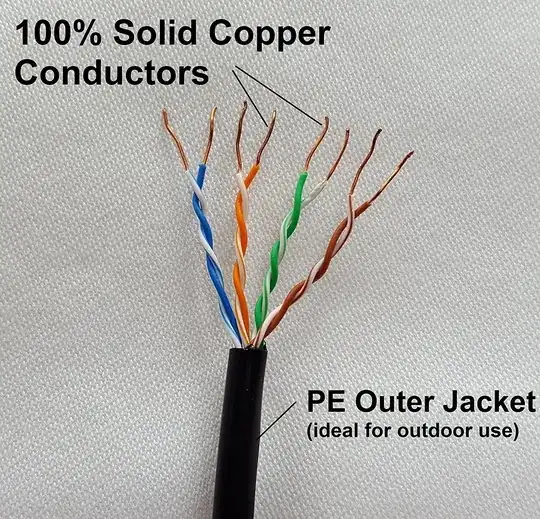All outdoor cable is water resistant to a degree. However when you are talking about submerging a cable, this is an entirely different matter than being exposed to rain/dew.
When you are going to be submerging a cable, it needs to contain some sort of "waterblock" that will prevent the water that eventually gets through the jacket (and it will, guaranteed). Waterblock comes in two forms, dry or gel.
Dry waterblock is a "fabric" that lines the cable under the outer jacket and surrounds the inner core. When exposed to water it will swell and block any point where water gets through the jacket. Dry waterblock is easier/cleaner to work with as you simply cut away the waterblock that you don't need when terminating.
Gel waterblock fills the entire inside of the jacket and will settle to fill any gaps or openings that would otherwise allow water to penetrate. It is generally harder and messier to deal with than dry waterblock. You must remove the gel before termination as the gel is non-conductive and the gel can get onto hands/tools/clothes and nearby objects while you are working with it. However, gel provides a much better waterblock solution and tends to provide a longer lifespan for submerged cable.
Either way, you also want to get an outer jacket that is at least UV-resistant (i.e. so sunlight is less likely to weaken the material) and if possible corrosive resistant.
